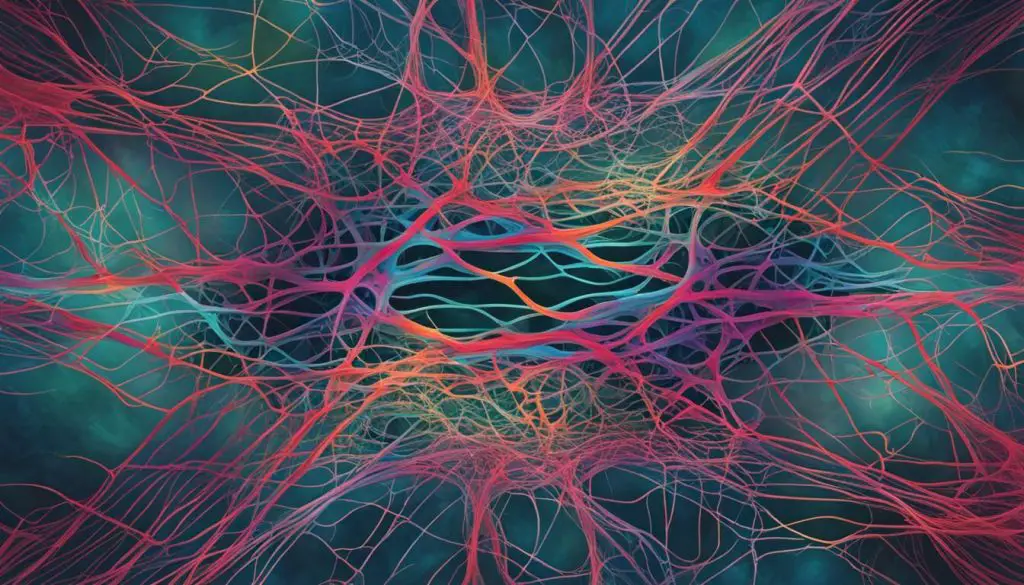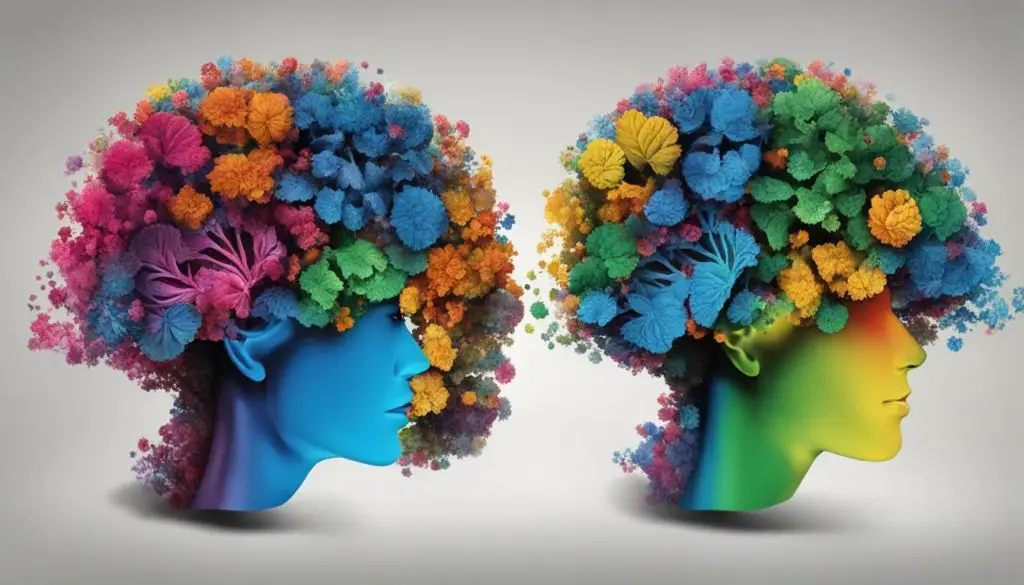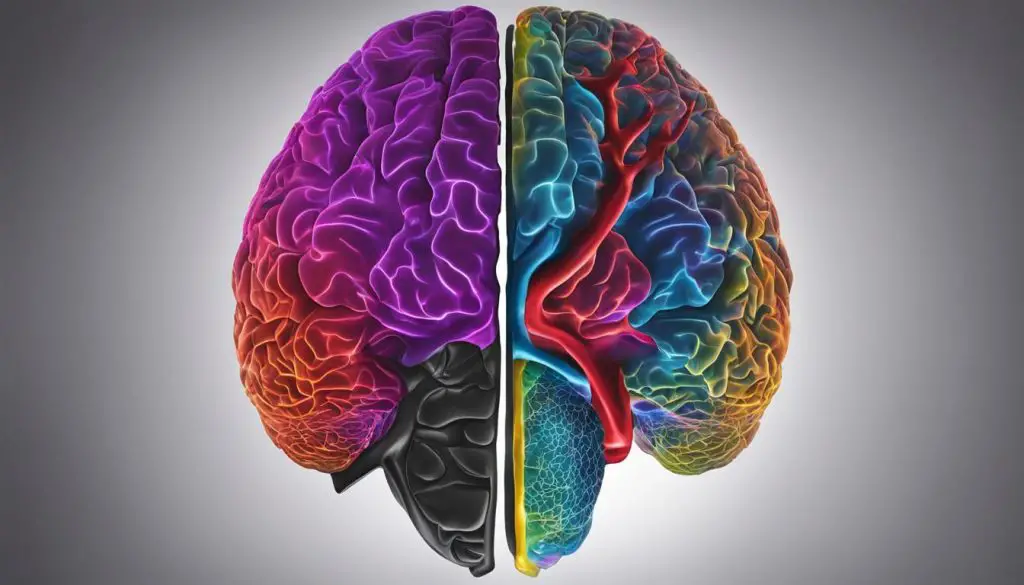Transgender individuals have fascinated scientists and researchers for decades due to the unique workings of their brains and how they relate to gender identity. Studies have shown that transgender individuals (TIs) have brain structures that differ from both their biological sex and their perceived gender.
Spanish investigators used MRI to examine the brains of female-to-male and male-to-female individuals before and after cross-sex hormone treatment. They found that even before treatment, the brain structures of the trans people were more similar to the brains of their experienced gender. For example, female-to-male subjects had relatively thin subcortical areas, which tend to be thinner in men, while male-to-female subjects had thinner cortical regions in the right hemisphere, which is characteristic of a female brain.
Other studies have used functional MRI to examine how individuals with gender dysphoria respond to stimuli. In one study, adolescent boys and girls with gender dysphoria responded to an odorous steroid in a way similar to their experienced gender. Overall, the evidence suggests that there is a biological basis for gender dysphoria and that the brains of transgender individuals exhibit unique patterns that differ from both males and females. However, further research is needed to fully understand the complexities of transgender brains.
The Neurology of Gender Identity
Numerous studies have examined the neurology of gender identity, revealing intriguing insights into the complexities of transgender brains. These studies have utilized cutting-edge techniques such as magnetic resonance imaging (MRI) and functional MRI to explore the structural and functional differences in the brains of transgender individuals.
A study conducted by Spanish investigators used MRI to examine the brains of female-to-male and male-to-female individuals both before and after cross-sex hormone treatment. The findings revealed that even before treatment, the brain structures of transgender individuals were more similar to those of their experienced gender. For instance, female-to-male subjects displayed relatively thin subcortical areas, which are typically thinner in men, while male-to-female subjects exhibited thinner cortical regions in the right hemisphere, characteristic of a female brain.
Using functional MRI, other researchers have investigated how individuals with gender dysphoria respond to stimuli. In one study, adolescent boys and girls with gender dysphoria were exposed to an odorous steroid. The results showed that their responses were consistent with their experienced gender. These findings suggest that there is a biological basis for gender dysphoria and that the brain patterns of transgender individuals differ from both males and females. However, further research is needed to fully comprehend the complexities of transgender brains and the relationship between brain structure and gender identity.

| Recent Study | Key Findings |
|---|---|
| A Spanish investigation using MRI | Brain structures of transgender individuals resemble those of their experienced gender even before hormone treatment. |
| Functional MRI study | Responses of individuals with gender dysphoria align with their experienced gender when exposed to stimuli. |
“The evidence suggests that there is a biological basis for gender dysphoria and that the brains of transgender individuals exhibit unique patterns that differ from both males and females.”
Conclusion
The neurology of gender identity is a fascinating field of study that sheds light on the biological underpinnings of transgender experiences. From brain structure differences to neural responses, research has provided valuable insights into the complexities of transgender brains. However, it is important to continue exploring this area to deepen our understanding and better support transgender individuals.
Brain Differences in Transgender Individuals
Research has shown that transgender individuals exhibit distinct brain differences compared to both their biological sex and their perceived gender. Studies have utilized various imaging techniques to explore these differences and gain a deeper understanding of the neurological underpinnings of gender identity.
One study conducted by Spanish investigators used MRI to examine the brains of female-to-male and male-to-female individuals before and after cross-sex hormone treatment. The results revealed that even before undergoing treatment, the brain structures of transgender individuals were more aligned with their experienced gender rather than their biological sex. For instance, female-to-male individuals displayed relatively thin subcortical areas, which are typically thinner in cisgender men, while male-to-female individuals exhibited thinner cortical regions in the right hemisphere, a characteristic feature of cisgender women.
Functional MRI studies have also shed light on how individuals with gender dysphoria respond to stimuli. In one particular study, adolescents with gender dysphoria reacted to an odorous steroid in a manner similar to their experienced gender. These findings suggest that there is a biological basis for gender dysphoria and that transgender brains exhibit unique patterns that differ from both male and female brains.
While these studies provide valuable insights, it is essential to note that our understanding of transgender brains is still evolving. Further research is needed to fully comprehend the complexities and intricacies of transgender brains, allowing for a more comprehensive understanding of gender identity and fostering greater acceptance and inclusivity for transgender individuals.

**Table: Brain Differences in Transgender Individuals**
| Brain Region | Female-to-Male Individuals | Male-to-Female Individuals |
|—————–|—————————|—————————-|
| Subcortical | Relatively thinner | Not significantly different|
| Cortical | Not significantly different| Relatively thinner |
| Right Hemisphere| Not significantly different| Relatively thinner |
Studies have demonstrated that hormone treatment plays a significant role in shaping the brain structure and function of transgender individuals. For instance, one study conducted on female-to-male transgender individuals found that testosterone therapy led to an increase in cortical thickness in certain brain regions, specifically in the insular cortex and anterior cingulate cortex. These changes are associated with emotional and cognitive processing, indicating an impact on the individual’s overall well-being and mental health.
On the other hand, estrogen treatment in male-to-female transgender individuals has been shown to decrease certain brain regions’ volume, such as the amygdala and hippocampus. These areas are involved in emotion regulation and memory formation, suggesting that hormone therapy may contribute to emotional and cognitive changes experienced by transgender women.
Moreover, hormone treatment also affects brain connectivity in transgender individuals. Research has shown that hormone therapy influences the organization of white matter tracts in the brain, which are responsible for transmitting signals between different regions. These changes in connectivity patterns may contribute to the alignment of brain structure and function with the individual’s affirmed gender.
Impact on Overall Well-being
The findings from these studies highlight the profound impact that hormone treatment can have on transgender individuals’ brain structure and function. By bringing the brain more in line with their gender identity, hormone therapy plays a crucial role in alleviating gender dysphoria and improving overall quality of life. However, it is important to note that the effects of hormone treatment on the brain are complex and vary among individuals. Further research is needed to fully understand the long-term effects and potential risks associated with hormone therapy in transgender individuals.

| Study Title | Transgender Participants | Hormone Treatment | Brain Changes |
|---|---|---|---|
| Neuroimaging of Transgender Individuals | Male-to-female and female-to-male | Testosterone and estrogen therapy | Increased cortical thickness, changes in white matter connectivity |
| Effects of Hormone Therapy on Gender Dysphoria | Male-to-female | Estrogen therapy | Decreased volume in amygdala and hippocampus |
| Gender Identity and Brain Structure | Female-to-male | Testosterone therapy | Increased thickness in insular cortex and anterior cingulate cortex |
Table: Studies investigating the effects of hormone treatment on brain structure in transgender individuals.
Emerging Frontiers in Transgender Brain Research
While significant progress has been made, the field of transgender brain research continues to evolve, offering exciting possibilities and new avenues for understanding the intricate workings of the transgender brain.
Fascinating studies have revealed that transgender individuals have brain structures that differ from both their biological sex and their perceived gender. Researchers from Spain utilized MRI technology to examine the brains of female-to-male and male-to-female individuals, both before and after undergoing cross-sex hormone treatment. The results were remarkable, as they found that even prior to treatment, the brain structures of transgender individuals showed similarities to those of their experienced gender. For example, female-to-male subjects displayed relatively thin subcortical areas, which are typically thinner in men, while male-to-female subjects exhibited thinner cortical regions in the right hemisphere, which is characteristic of a female brain.
Additionally, functional MRI studies have investigated how individuals with gender dysphoria respond to various stimuli. In one particular study, adolescent boys and girls with gender dysphoria responded to an odorous steroid in a manner consistent with their experienced gender. These findings, along with other research, collectively suggest that there is indeed a biological basis for gender dysphoria. Furthermore, the unique patterns exhibited by the brains of transgender individuals differentiate them from both males and females, providing further evidence of the complexity involved.
Although these studies have shed light on the understanding of transgender brains, there is still much more to learn. Ongoing research is crucial to fully comprehend the intricacies and nuances of transgender brains. By delving deeper into the emerging frontiers of transgender brain research, scientists can unlock new insights and potentially develop more targeted therapies and interventions for individuals with gender dysphoria.
FAQ
How do transgender brains work?
Transgender individuals have brain structures that differ from both their biological sex and their perceived gender. Studies have shown that their brain structures align more closely with the brains of their experienced gender.
What research has been conducted on transgender brains?
Spanish investigators used MRI to examine the brains of transgender individuals before and after cross-sex hormone treatment. They found that even before treatment, the brain structures of trans people were more similar to the brains of their experienced gender. Other studies have used functional MRI to observe how individuals with gender dysphoria respond to stimuli.
What brain differences are observed in transgender individuals?
Female-to-male transgender individuals tend to have relatively thin subcortical areas, which are typically thinner in men. On the other hand, male-to-female transgender individuals often have thinner cortical regions in the right hemisphere, which is characteristic of a female brain. These unique patterns indicate that transgender individuals have brain structures that differ from both males and females.
How does hormone treatment impact transgender brains?
Hormone treatment can influence the brain structure and development of transgender individuals. Further research is needed to fully understand the specific effects of hormone treatment on transgender brains.
What are the emerging frontiers in transgender brain research?
Transgender brain research is still in its early stages, and further exploration is needed to fully comprehend the complexities of transgender brains. Ongoing studies are focused on understanding the neurology of gender identity and how it contributes to transgender experiences.